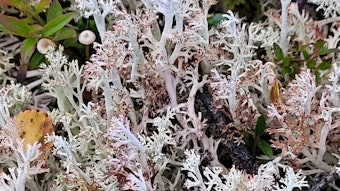
Cultivated by dozens of ancient cultures across thousands of years, lavender is one of the most historically significant crops within the entire flavor and fragrance industry. The word lavender is derived from the Latin word lavare, which means to wash.
As one might expect, lavender flowers were commonly used in Greek and Roman bathhouses as the pleasant odor of the plant was associated with health and cleanliness. The use of lavender within the cosmetic industry dates back to Ancient Egypt with certain embalming rituals requiring the plant for completion. With such diverse and widespread applications, it’s of little surprise that lavender eventually made its way to Bulgaria, where the flower would soon discover its little slice of paradise. The Rose Valley of Bulgaria, located just south of the Balkan Mountains, proved to be a grower’s dream for the plant, and lavender oil production began shortly after the crop was introduced.
Bulgarian lavender oil production flourished throughout much of the 20th century, particularly after Bulgarian agriculture saw major economic expansions during the 1970s. Throughout this time, nearly all material was grown by the same traditional farming communities that had existed in the region for 400 years. The unique soil and climate conditions of Rose Valley proved to be perfect for lavender production and the flowers grew rapidly across its many temperate hillsides. However, despite the crop’s initial success, Bulgarian lavender production took a major hit in the 1990s after the Soviet Union collapsed and the territory was left without proper financial support. The transition from state-owned companies to private enterprises was slow and costly, eventually production stabilized, and lavender oil began to flow from the valley once more. As time went on, Bulgarian lavender oil only grew in popularity, overtaking the French production of lavender back in 2018. Advancements in distillation methods, combined with the incredibly high quality of lavender from the Bulgarian growing regions have kept the oil firmly ahead of the competition ever since.
In perfumery, Bulgarian lavender differs from other varieties of lavender oil in both strength and aromatic complexity. The oil contains more linalool and linalyl acetate than its other European counterparts, which imparts a far richer fruity-floral odor while removing some of those green and medicinal qualities found in lesser quality material. Bulgarian lavender oil finds particularly high usage in “Fougère” style perfumes, though the material is also popular among soaps, cosmetics and other personal care products. Similar to the legendary Rosa damascena, Bulgarian lavender has a unique warm and hay-like character upon drydown, which adds even further complexity when blended with ingredients such as rosewood, bergamot and green patchouli.
Berje Trakia continues this history of tradition and quality with our latest facility in Bulgaria, ensuring that these traditional farming communities can continue to grow and distill the flowers that make their region so emblematic. For more information regarding Bulgarian lavender, as well as myriad other essential oils and aromatic chemicals, please visit our website BerjeInc.com!
Disclaimer:
The above paid-for content was produced by and posted on behalf of the Sponsor. Content provided is generated solely by the Sponsor or its affiliates, and it is the Sponsor’s responsibility for the accuracy, completeness and validity of all information included. Cosmetics & Toiletries takes steps to ensure that you will not confuse sponsored content with content produced by Cosmetics & Toiletries and governed by its editorial policy.










